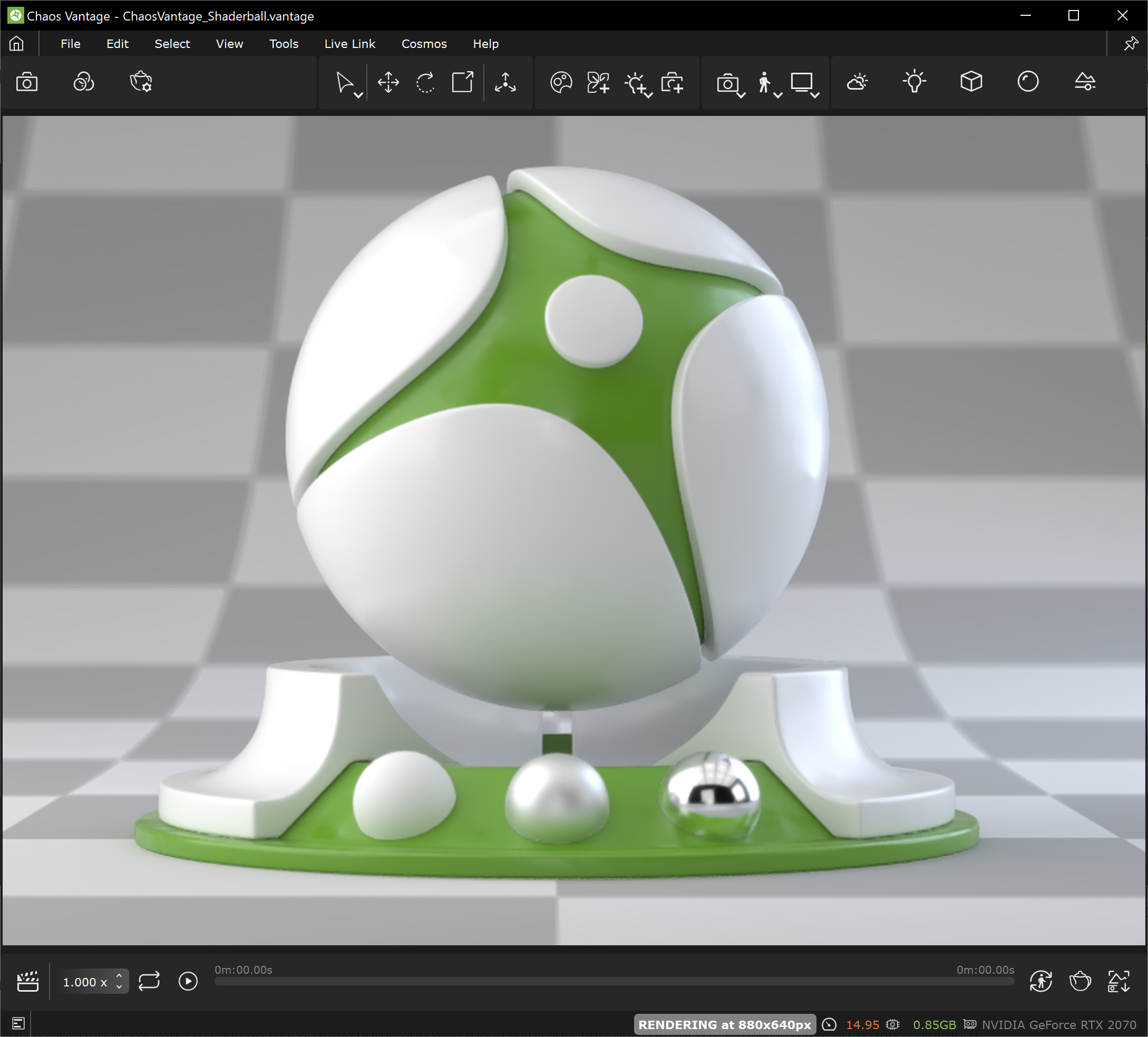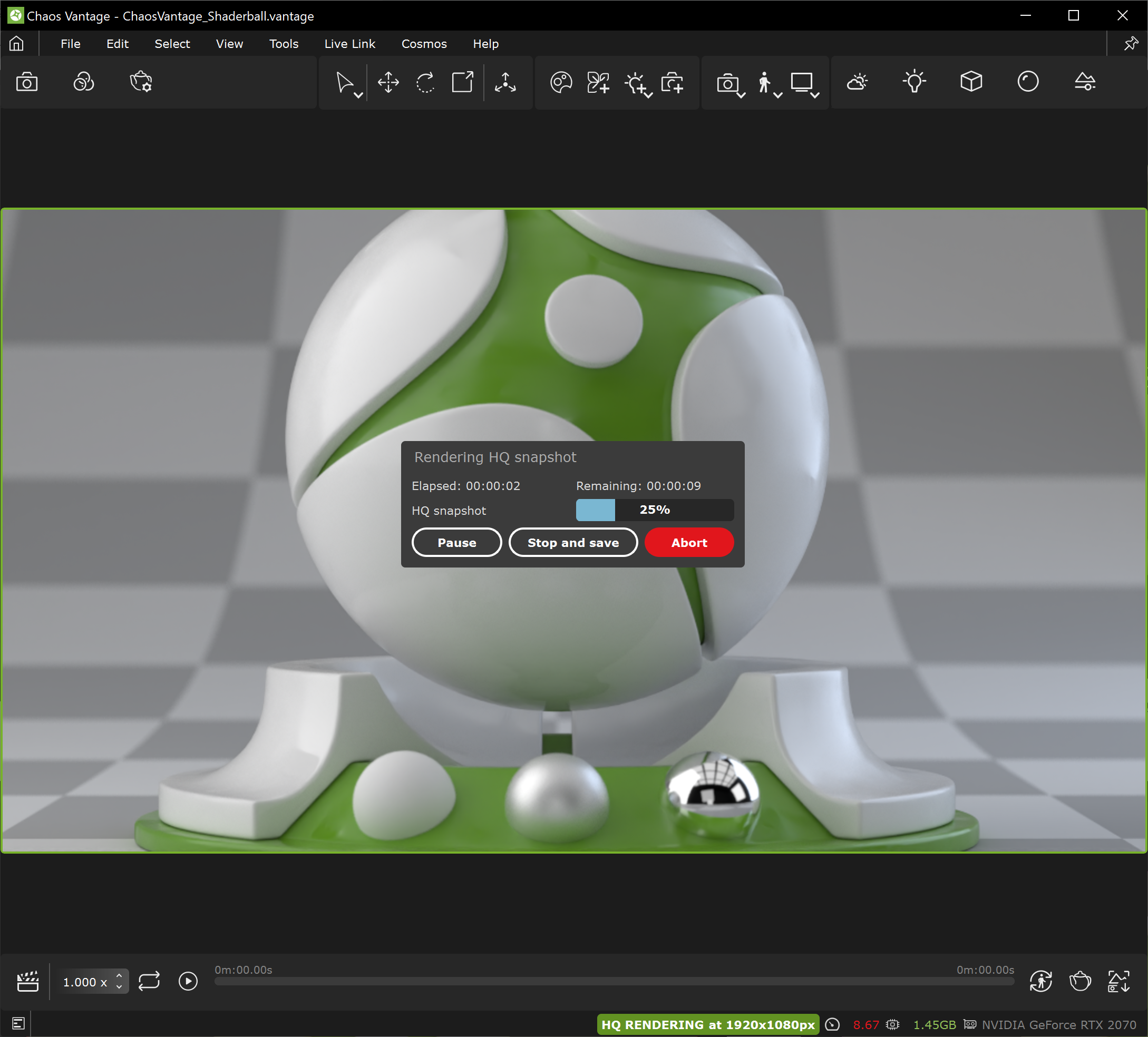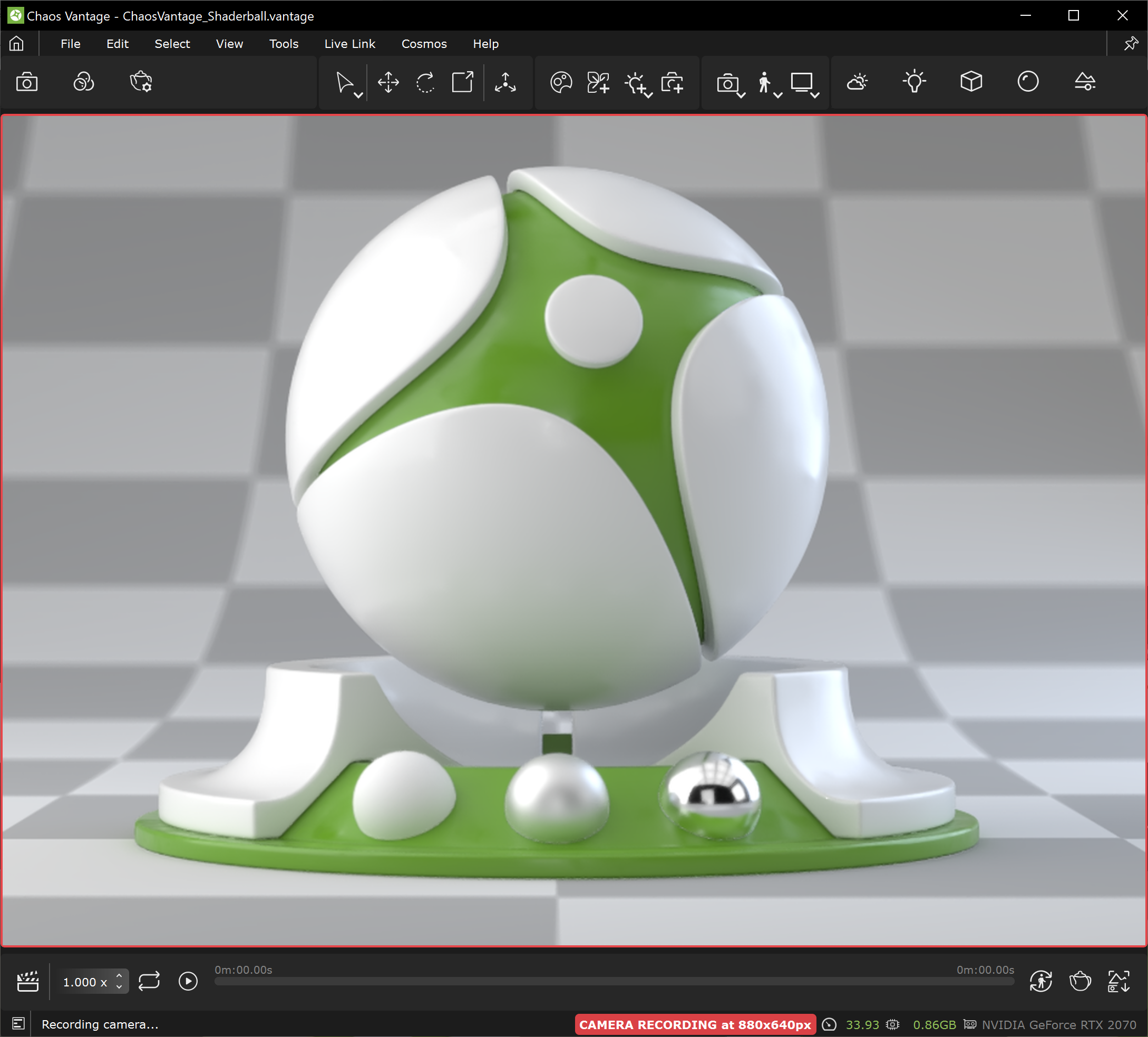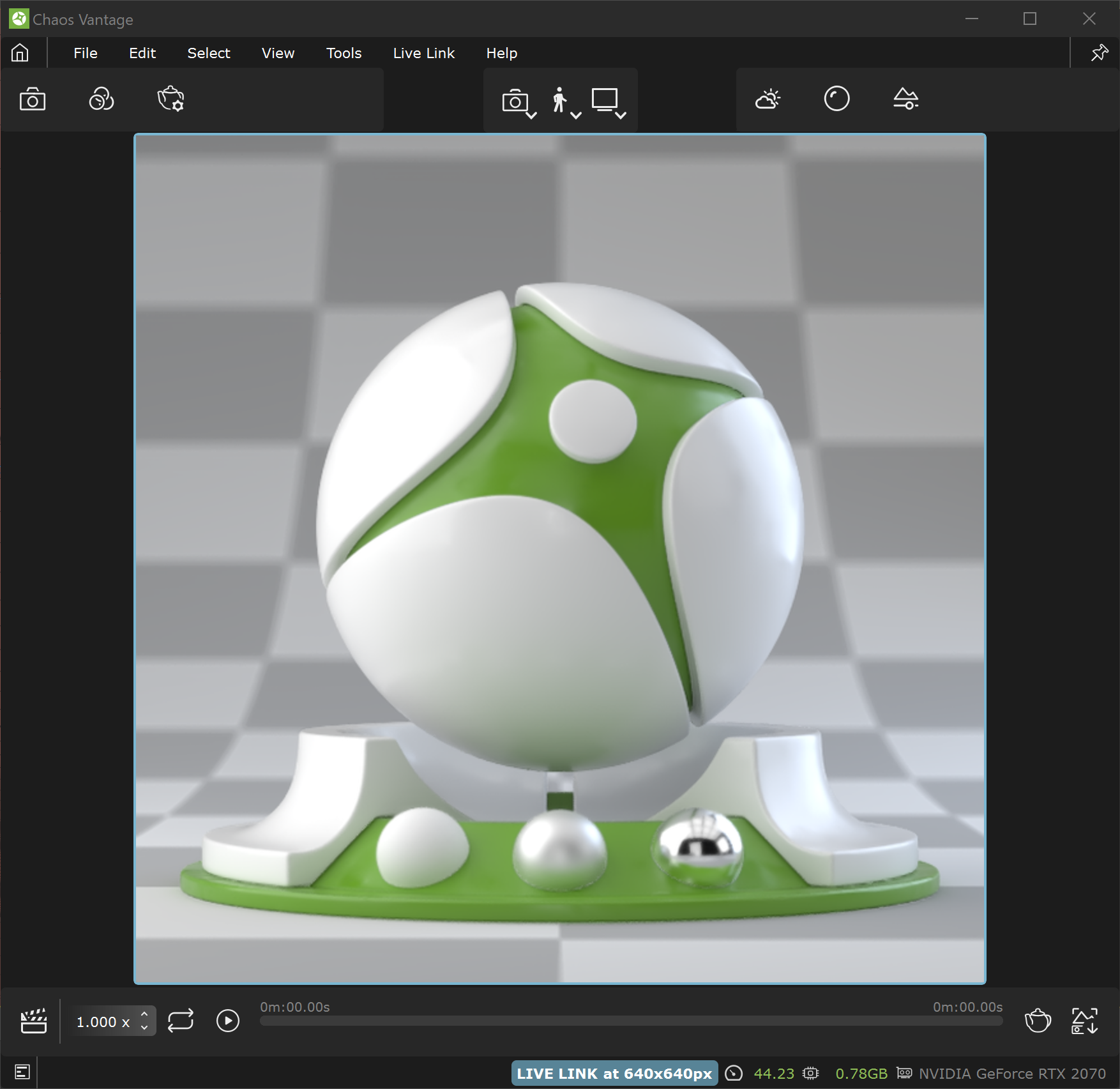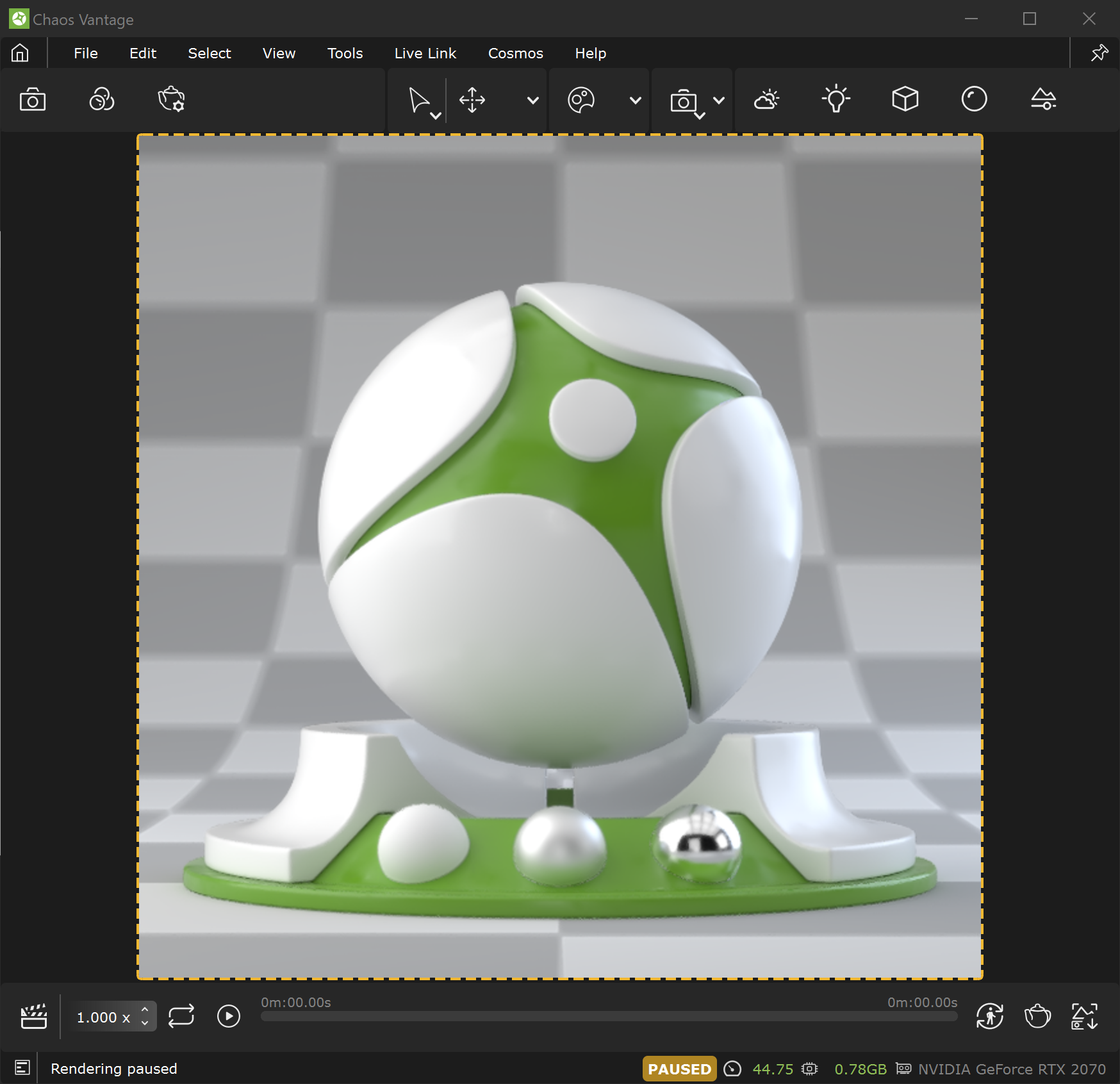This page offers information on the toolbars of Chaos Vantage.
Overview
Chaos Vantage has three sets of toolbar icons that reside in Top, Bottom and Status toolbars.
You can use the right mouse button click to reset the parameters numeric values to defaults.
Top toolbar
| Button | Description |
|---|---|
| Pauses the render. (Shortcut: Pause ) | |
| Enables/disables rendering of opacity maps. Note that opacity works as a clipper - it is either fully transparent or fully opaque. | |
| Enters Collision mode. It allows the camera to collide into objects instead of going through them. Works only in Free look mode. (Shortcut: C ) | |
| Enters Free look mode. (Shortcut:` ) | |
Choose the coordinate space for transformations. The default is World. Press the arrow to choose between World and Local space. | |
Select. (Shortcut: Q ) Select group. Found by clicking and holding the Selection button. | |
| Enters Move mode. (Shortcut: W ) | |
| Enters Rotate mode. (Shortcut: E ) | |
| Enters Scale mode. (Shortcut: R ) | |
| Translates an object's pivot point. | |
Navigates around cursor ray hit. Navigates around target. Navigates around selection. | |
| Increases the mouse precision for navigation. This option is useful for fine camera adjustments. | |
| Picks focus point.(Shortcut: T ) | |
| Adjusts the Exposure value. | |
Adjusts the Denoiser: 0 disables the denoiser, while 100 shows the denoised image. A mid-value shows the denoised image until it reaches enough number of samples, then it starts to blend with the raw image. Note: images with denoiser > 0 and denoiser=0 will be different in reflections and refractions. | |
| Enables/disables Look up tables (LUT) post process effect. | |
| Enables/disables Bloom effect. |
Bottom Toolbar
| Button | Description |
|---|---|
| Expands the Animation Editor. For more information, see the Animation Editor page. | |
| Sets the playback speed. | |
| Plays once the animation. (Shortcut: Space ) | |
| Loops the animation. Press and hold the Play once button to select the Loop option. | |
| Creates a new camera and records its movement. | |
| Sets start of animation sequence | |
| Sets end of animation sequence | |
Renders high quality sequence. Details | |
Renders high quality snapshot. Details | |
| Quick saves high quality snapshot in the project folder from where the .vrscene file has been imported. |
You can crop your animation sequence using the Set Start and Set End markers
Status Bar
The status bar resides in the bottom of Chaos Vantage. Here you can find information about:
Left-hand side
- Timing information about last snapshot render located in bottom left after a successful render.
Right-hand side
- Render status – Displays the current Chaos Vantage status. Status can be:
- [RENDERING] – Interactively rendering the scene.
- [HQ RENDER] – Rendering offline image or a sequence.
- [CAM REC.] – Recording camera movement.
- [ENCODING] – Capturing and encoding viewport to an .mp4 file.
- [LIVE LINK] – Live Link session is initiated between Chaos Vantage and a V-Ray compatible DCC.
- [PAUSED] – Rendering is paused.
Rendering device(s) – List of graphic cards used for rendering.
Note that Chaos Vantage will use up to 2 graphic cards and also those with most compute power e.g. if there is a RTX card and a GTX card, Chaos Vantage will use the RTX card but if you have 2 RTX cards, it will use both.
- FPS – Speed of the rendered frames per second. Hovering over displays information about:
- Render time – Time spent in seconds rendering the last frame.
- Samples accumulated – Amount of samples currently accumulated in the last frame.
- Last post-process – Time spent for post-processing effects. in the last frame.
- VRAM — Current amount of VRAM used for the scene. Hovering over displays information about:
- Primary device total memory – Memory of the primary graphic card used for rendering.
- Primary device available memory – Currently available memory of the graphic card used for rendering.
- Number of BLASes – Number of Bottom Level Acceleration Structure (BLAS) currently loaded on the GPU.




